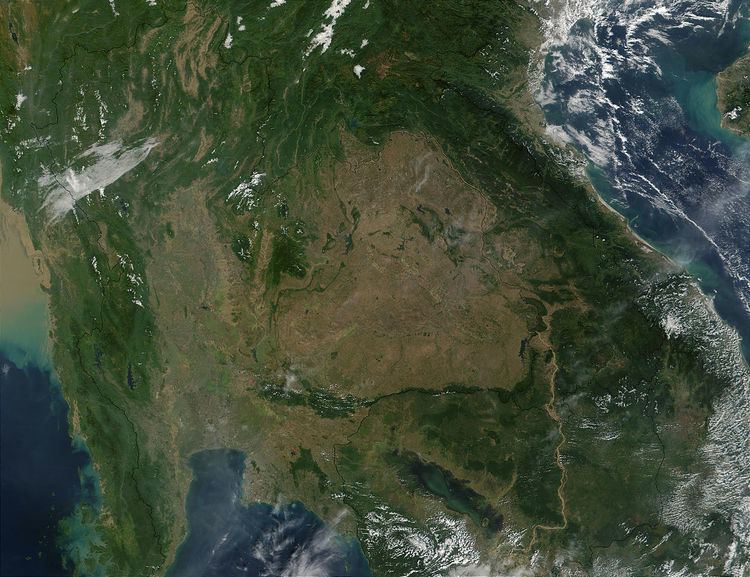 | ||
Between 1945 and 1975 forest cover in Thailand declined from 61 percent to 34 percent of the country's land area. Over the succeeding 11 years, Thailand lost close to 28 percent of all of its remaining forests. This means that the country lost 3.1 percent of its forest cover each year over that period. An estimate by the World Wildlife Fund concluded that between 1973 and 2009, Thailand's forests declined by 43 percent. The Thai Highlands in northern Thailand, the most heavily forested region of the country, were not subject to central government control and settlement until the second half of the 19th century when British timber firms, notably the Bombay Burmah Trading Corporation and the Borneo Company Limited, entered the teak trade in the late-1880s and early-1890s. The Royal Forest Department, created in 1896 and headed by a British forester until 1925, sought to conserve the forests against the worst business practices of British, Thai, and Chinese timber firms who worked in the region.
Contents
- History of Thai forest management
- Intact forest landscape
- Population growth
- Agricultural policy
- Land ownership policy
- Illegal logging
- References
During the 20th century, deforestation in Thailand was driven primarily by agricultural expansion, although teak deforestation happened as a direct result of timber-cutting. Much of Thailand's recent economic improvement can be attributed to increased agricultural production for export. The country was able to increase production by clearing much of their forest and converting it to cropland.
The Thai government is beginning to emphasize forest restoration.
History of Thai forest management
Intact forest landscape
Intact forest landscape (IFL) "...is a seamless mosaic of forest and naturally treeless ecosystems with no remotely detected signs of human activity and a minimum area of 500 km2". These areas must be undisturbed by human activities—they cannot be traversed by roads or deforested or harbor industrial operations. When any of these conditions apply, the ecosystems cease to be considered "intact". As of 2000 Thailand had 19,400 km2 of IFL, amounting to seven percent of its forested landscape. Over the period 2000-2013, 7.8 percent of Thailand's natural, intact forest landscape disappeared.
Population growth
This is most evident in the northeast region of Thailand. The region is the most densely populated in the nation and has some of the least productive soils for agriculture. As populations increased, the need for food increased, and much forest land was cleared to increase food production.
Agricultural policy
The Thai government put controls on the price of rice, which encouraged farmers to explore alternative crops. However, the largest impact agricultural policy had on deforestation was the construction of roads following World War II. These roads were built to help farmers bring food products from rural areas to urban centers. This encouraged farmers to move away from subsistence farming and begin to farm on a larger scale.
Land ownership policy
Thailand is a nation where over 80 percent of land is owned by the richest 10 percent of the population and where property rights are ambiguous and are often interpreted differently by the various branches of the Thai government. The inability of many Thai citizens to secure property has resulted in their turning to forests to find space to farm. Often wildfires are deliberately set by local farmers, as well as by speculators who hire people to set forests on fire in order to claim land title deeds for the areas that have become "degraded forest".
Illegal logging
Governmental officials in charge of protected areas have contributed to deforestation by allowing illegal logging and illegal timber trading. King Bhumibol Adulyadej has blamed the destruction of Thailand's forested areas on the greed of some state officials. This is evident in places such as large protected swathes of northern Nan Province that were formerly covered with virgin forest and that have been deforested even while having national park status.
